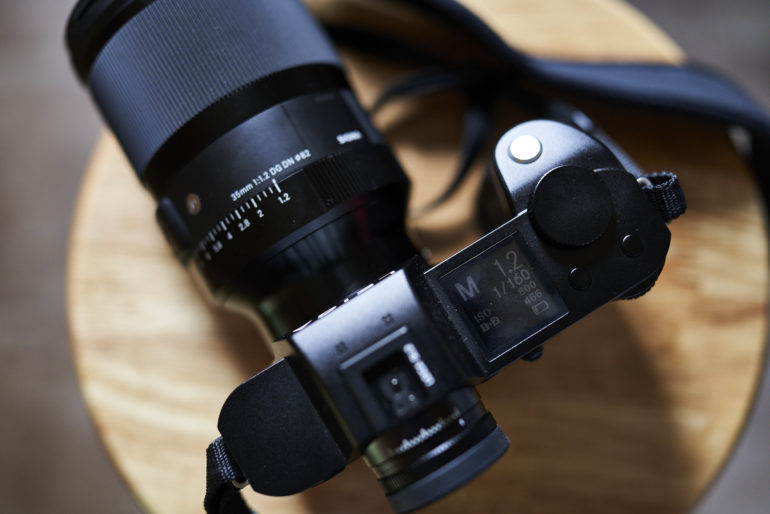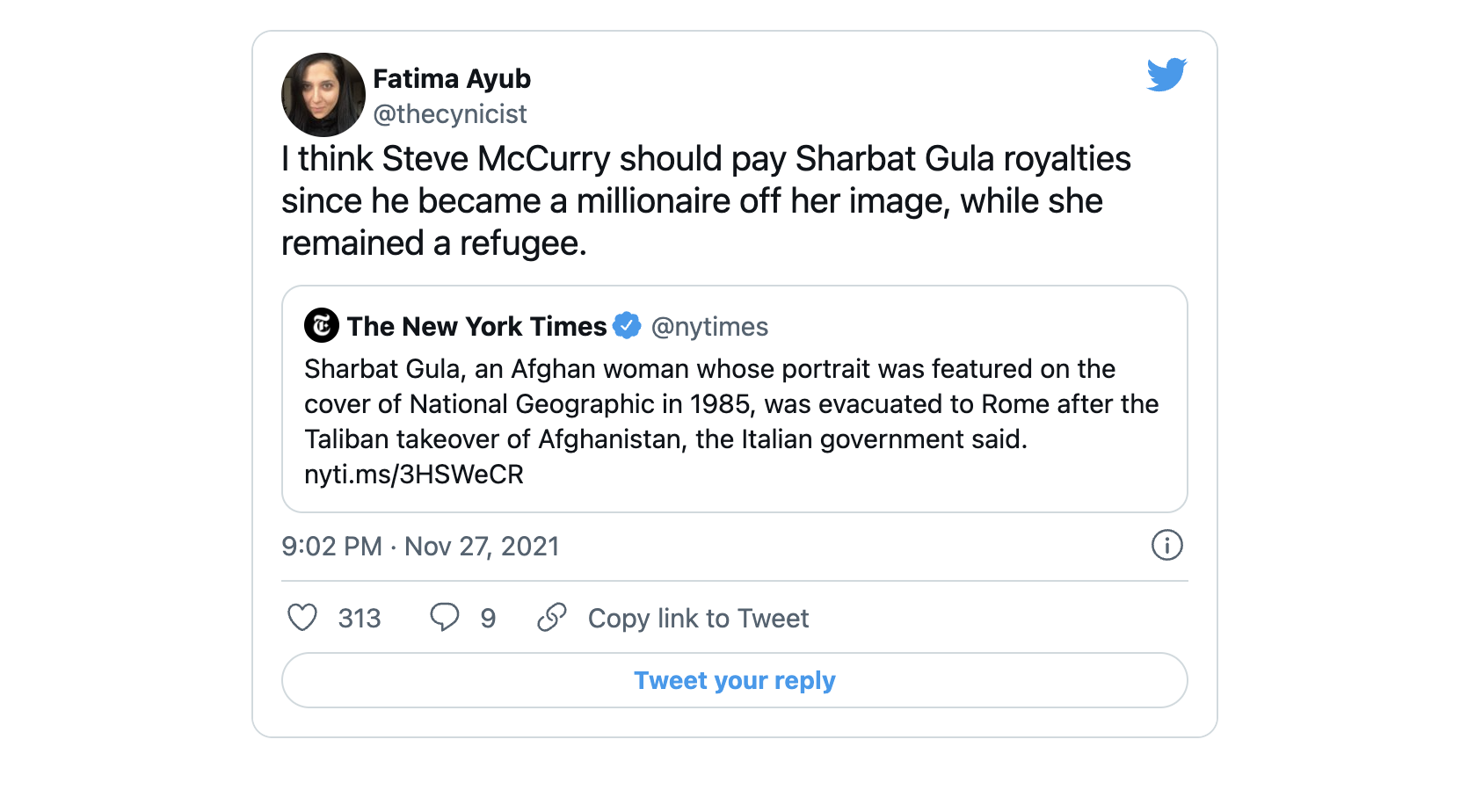Italy— Sharbat Gulla will now call the Mediterranean country her home. For those unaware of who Gulla is, that’s likely because you know her as Afghan Girl. She’s the 12-year-old refugee who stared down the lens of world-famous photographer Steve McCurry. The portrait went viral in today’s terms, and National Geographic was the platform that spread its power. Any time Gulla comes up in the news, so does McCurry’s contribution to her story, and many people show their disdain for the success McCurry has been able to enjoy because of it.
You can view this article and much more with minimal ads in our brand new app for iOS, iPadOS, and Android.
Steve McCurry’s Afghan Girl
It was 1984 when McCurry shot what would become one of the most iconic images of a generation. In 1985 it made the front cover of the June edition of National Geographic. During a 2016 interview with CNN, McCurry said of the image, “When I developed the picture, I knew it was special. I showed it to the editor of the National Geographic, and he leaped to his feet and shouted, ‘That’s our next cover!'”
A year later, McCurry would become a member of Magnum, an organization many people still regard as the leading photography cooperative. His other milestones include global exhibitions, a stream of successful photo books, and a long list of awards. It’s unfair to say this was all because of Afghan Girl; McCurry has plenty of work that holds up against that portrait. But it’s hard to deny that Sharbat Gulla was the poster girl for the rest of McCurry’s glittering career.
Between 1984 and 2002, nobody knew what became of Gulla’s life after McCurry took her portrait. As is often the case for a subject like her, she was unaware of her iconic status in the western world. Much of the developed world knew she existed, but nobody knew who she was.
That changed when National Geographic’s television department tracked her down and reunited her with McCurry after 18 years. Not much had improved since their first meeting. Nat Geo described her day-to-day existence here. She looked tired and wore the mental scar of a child who grew up enduring 23 years of war.
What’s clear is that both people involved in that image went on to live very different lives. And, because of this, people are calling McCurry out.
Backlash Against McCurry After Afghan Girl
As news spread worldwide that the Italian government had given Gulla permission to live in Italy, McCurry’s image returned to the forefront of the conversation. Twitter, the digital home of all political and societal opinions, was the platform for people to voice their issues.
One Twitter user, Fatima Ayub, said:
“I think Steve McCurry should pay Sharbat Gulla royalties since he became a millionaire off her image while she remained a refugee.”
Another Twitter user wrote:
“She should’ve been compensated for widely (sic) viewed photo.”
I understand why people feel this way. But I disagree that McCurry owes Gulla financial compensation.
The Role of Telling Important Stories

The role of a photographer is to tell stories. Those who venture away from the safe zones of photographic practice and enter a world of risk and sacrifice have especially important stories to tell. Photojournalism and documentary photography helps to keep people in society accountable. A photographer’s sensor records events people wouldn’t be aware of if the technology and the person skillfully using it didn’t exist.
Is it sad that McCurry and Gulla are total opposites in terms of life experience? Of course. But Gulla’s experience in the world isn’t because of McCurry. I would argue that McCurry’s photographs served a greater benefit than paying royalties to his subject. According to his 2016 interview with CNN, McCurry told the reporter, “People volunteered to work in the refugee camps because of that photograph.” He added, “Afghans are incredibly proud of it, as the girl is poor but shows great pride, fortitude and self-respect. It drew attention to their plight, and inspired a lot of people.”
There’s another point to consider. Asking photographers with a journalistic background to pay their subjects can be a slippery slope. Most photojournalistic images don’t have the success Afghan Girl had. Photographers tend to be freelancers, and I can assure you it’s often about getting by rather than drowning in riches. What’s the threshold for paying a subject? Who gets to decide that? It makes far more sense, logically and ethically, to keep candid photography the way it is: images shot in public are free to use.
Financial incentives may also create a lack of authenticity. Stories and images may become staged or exaggerated by the local people that connect photographers to struggling communities. Money changes behavior, and I don’t think photographers in this field, no matter how successful, should pay someone for taking their photograph.
Who Should Pay for Afghan Girl?
My initial thought after protecting McCurry was that if anyone should pay Gulla, it should be National Geographic. I guarantee no matter how well McCurry did out of that relationship, Nat Geo did better. But before I questioned their contribution, I did some research.
Following the publication of the portrait, Nat Geo set up the Afghan Children’s Fund. The goal was to help girls like Gulla get better support during their difficult life. Sadly, I couldn’t find much information on the impact the foundation had in real-world terms. Could Nat Geo have made a direct contribution to Gulla? Maybe. But again, it raises the question of who should be eligible for royalties and who shouldn’t? Sadly not everyone can get paid.
Final Thought
What is evident here is that neither Nat Geo nor McCurry lack recognition and understanding for the suffering and pain Gulla has experienced. She’s one of the millions of Afghan women that share the same struggle. And it’s a sad reality that those in the developed world live more fruitful lives than most in the Middle East. But that’s not because of Steve McCurry. His images help uplift nations many people fear. Afghan Girl helped show the uninformed what life is like on the other side. And it promoted others to help drive change. That’s a lot of influence from just one photograph.
People should not shame McCurry for his work. Instead, they should applaud it. And if people keep on insisting photojournalists pay their subjects, they’ll be few photographers like McCurry in the future. That would be terrible for society and detrimental to the important role photography plays for us all.


